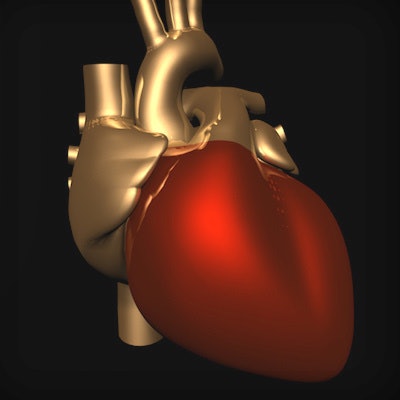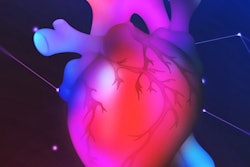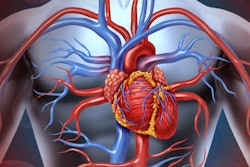
Is CT a viable alternative to cardiac MRI for assessing heart chamber enlargement? Yes, say researchers from Canada, who discovered that the condition was much more common in men than women. Their findings were published in the November issue of the American Journal of Roentgenology.
The group, led by Dr. Kate Hanneman from the University of Toronto's joint department of medical imaging, measured the heart chambers of hundreds of individuals who underwent both contrast-enhanced CT and cardiac MRI within the same week between August 2006 and August 2016 (AJR, November 2018, Vol. 211:5, pp. 993-999).
Although cardiac MRI is viewed as the gold standard for evaluating heart size and function, the exam is rarely performed as an initial test due to its high cost and long scanning times, the authors noted. Several studies have recognized potential in using CT instead, but the majority of this research has focused on electrocardiogram-gated CT, which requires a relatively high radiation dose and is rarely used in actual clinical practice.
To verify the feasibility of diagnosing heart chamber enlargement on standard contrast-enhanced CT, Hanneman and colleagues compared the chest CT and cardiac MRI scans of 115 men and 102 women at their institution. The average age of the individuals was 52.8 years, and most of them were suspected of having pulmonary embolism.
CT proved to be nearly as accurate as MRI in its measurements, with a specificity exceeding 90% for each one of the four heart chambers. Furthermore, the CT scans uncovered a marked difference in the prevalence of heart chamber enlargement between men and women: The proportion of men was considerably higher than the proportion of women with enlargement of the right atrium, left atrium, and left ventricle, whereas enlargement in the right ventricle was slightly more common in women than in men.
| Evaluation of heart chamber enlargement on CT in men vs. women | ||||
| Prevalence | Accuracy of CT measurements | |||
| Men | Women | Men | Women | |
| Right atrium | 26% | 16% | 82.8% | 90.1% |
| Right ventricle | 11% | 15% | 90.9% | 85.1% |
| Left atrium | 40% | 27% | 73.8% | 84.7% |
| Left ventricle | 24% | 12% | 86.9% | 85.7% |
"Cardiac chamber enlargement can be identified with high specificity and reasonable sensitivity on axial chest CT images by use of sex-specific measurement thresholds," Hanneman and colleagues wrote.
Heart chamber enlargement is associated with a variety of adverse outcomes and could serve as an early indicator of a treatable pathologic condition, they noted. The high specificity suggests that individuals who have CT measurements that surpass the designated threshold will likely have a disease, warranting further diagnostic evaluation.




















